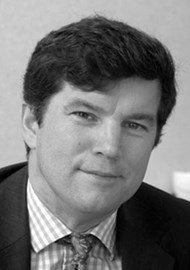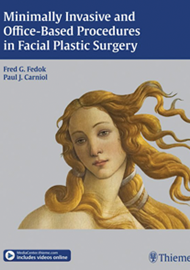The authors of Minimally Invasive and Office-Based Procedures in Facial Plastic Surgery share their expertise of the fast-evolving field of minimally invasive procedures in aesthetic facial rejuvenation in this informative textbook. The content of Minimally Invasive and Office-Based Procedures in Facial Plastic Surgery is structured, with delicate attention to detail.
Each chapter is introduced with a summary of key concepts and takes the reader on a journey through the history of evolution of the described procedure, the current gold standard treatments and their practicalities as well as potential complications and also the expected future advances in the domain described. The text is highlighted with informative tables, relevant basic science and anatomical information as well as information on patient selection and postoperative care. The high quality illustrations (both photographs and line drawings) complement the text throughout the book and the comprehensive references, as well as the supplementary videos, serve to enhance the educational experience of the reader.
The initial chapters dealing with facial ageing and skin care undertake a comprehensive exploration of the cellular processes and structural changes that accompany the ageing process and introduce the Baumann Skin Typing System (BSTS) as a standardised forum to identify skin types when selecting appropriate skin products and skin treatments for an individual. The four consecutive chapters on chemical peels explore man’s age old search for the ‘miracle potion’ that would reverse ageing, wrinkled skin and provide the reader with a fascinating insight into the endless possibilities of facial enhancement using a multitude of chemexfoliation procedures targeting different depths of dermis.
Similarly the chapters on light based therapies including intense pulsed light (IPL) and photodynamic therapy (PDT), lasers and fractionated technologies for skin resurfacing provide a wealth of practical knowledge when treating photo-damaged skin, rhytids, lentigines, dermal elastosis, scars and unwanted facial hair. Subsequent chapters discuss neuromodulators and the principles of tissue volume management through fillers and lipomodelling.
The chapters exploring minimally invasive surgical procedures in the outpatient setting detail the most common techniques for nasal, brow, eyelid, mid face and lower facial rejuvenation and provide detailed procedural tips and pointers. The final ‘specialty’ chapters on lip rejuvenation, otoplasty, facelift, necklift and hair transplantation also provide a wealth of practical knowledge that should enable surgeons at all levels or experience to strengthen their skills pertaining to these commonly performed, short duration facial plastic procedures in an office setting.
European readers might be concerned about the scope of procedures described as ‘office based’. Clearly the North American concept of an office and our concept of a room with four walls, a door and a desk are significantly different. We were also concerned by the descriptions of silicone injections in the nose. From the bitter experience of significant complications we, and many others, have abandoned the use of permanent injectable compounds into the face.
Nevertheless Minimally Invasive and Office-Based Procedures in Facial Plastic Surgery draws on the experience that an international body of authors has amassed from their diverse experience in the field of facial plastic surgery. Changing trends in non-surgical facial rejuvenation and facial plastic surgery are highlighted with reference to new technologies at various points in the book, though the undertones of ‘new’ is not necessarily ‘better’, are maintained at various points in the book.
For the plastic surgery trainee Minimally Invasive and Office-Based Procedures in Facial Plastic Surgery may enable one to grasp complex techniques and practical concepts without losing focus of basic principles.
As promised by the authors, Minimally Invasive and Office-Based Procedures in Facial Plastic Surgery has a practical ‘how-to’ orientation with ‘elegant simplicity’ and certainly lives up to its reputation as a collaborative, comprehensive, concise and practical resource of important innovations and state-of-the-art aesthetic facial surgery as it is practised today. But please don’t follow the suggestions for silicone injections!





